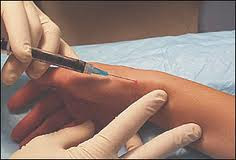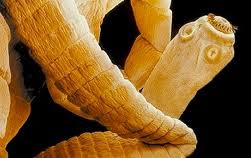Thoracic outlet syndrome
Definition:
Thoracic outlet syndrome is a group of disorders that occur when the blood vessels or nerves in the thoracic outlet — the space between your collarbone and your first rib — become compressed. This can cause pain in your shoulders and neck and numbness in your fingers.
Common causes of thoracic outlet syndrome include physical trauma from a car accident, repetitive injuries from job- or sports-related activities, certain anatomical defects, such as having an extra rib, and pregnancy. Even a long-ago injury can lead to thoracic outlet syndrome in the present. Sometimes doctors can't determine the cause of thoracic outlet syndrome.
Treatment for thoracic outlet syndrome usually involves physical therapy and pain relief measures. Most people improve with these conservative approaches. In some cases, however, your doctor may recommend surgery.
Symptoms:
Generally, there are three types of thoracic outlet syndrome.
See your doctor if you consistently experience any of the signs and symptoms of thoracic outlet syndrome.
Causes:
In general, the cause of thoracic outlet syndrome is compression of the nerves and blood vessels in the thoracic outlet, just under your collarbone (clavicle). The cause of the compression varies and can include:
Complications:
Thoracic outlet syndrome left untreated can cause permanent nerve damage; however, surgery to treat thoracic outlet syndrome is considered risky. This is because the procedure involves dividing a muscle in the neck and removing a portion of the first rib or repairing the brachial plexus nerves. For this reason, most doctors initially recommend a conservative treatment approach
Treatments and drugs:
In most cases, a conservative approach to treatment is effective, especially when the condition is diagnosed early. Treatment may include:
Surgical options
Surgery is usually effective in relieving pain associated with thoracic outlet syndrome. It may not be as successful in treating muscle weakness, especially if the condition has gone untreated for an extended period.
A specialist in thoracic surgery or vascular surgery will perform the procedure. All surgical options to treat thoracic outlet syndrome pose a significant risk of injury to the brachial plexus. The most common surgical approaches for thoracic outlet syndrome treatment are:
Definition:
Thoracic outlet syndrome is a group of disorders that occur when the blood vessels or nerves in the thoracic outlet — the space between your collarbone and your first rib — become compressed. This can cause pain in your shoulders and neck and numbness in your fingers.
Common causes of thoracic outlet syndrome include physical trauma from a car accident, repetitive injuries from job- or sports-related activities, certain anatomical defects, such as having an extra rib, and pregnancy. Even a long-ago injury can lead to thoracic outlet syndrome in the present. Sometimes doctors can't determine the cause of thoracic outlet syndrome.
Treatment for thoracic outlet syndrome usually involves physical therapy and pain relief measures. Most people improve with these conservative approaches. In some cases, however, your doctor may recommend surgery.
Symptoms:
Generally, there are three types of thoracic outlet syndrome.
- Neurogenic (neurological) thoracic outlet syndrome. This form of thoracic outlet syndrome is characterized by compression of the brachial plexus. The brachial plexus is a network of nerves that come from your spinal cord and control muscle movements and sensation in your shoulder, arm and hand. In the majority of thoracic outlet syndrome cases, the symptoms are neurogenic.
- Vascular thoracic outlet syndrome. This type of thoracic outlet syndrome occurs when one or more of the arteries and veins under the collarbone (clavicle) are compressed.
- Nonspecific-type thoracic outlet syndrome. This is also called disputed thoracic outlet syndrome or common thoracic outlet syndrome. Some doctors don't believe it exists, while others say it's a common disorder. People with nonspecific-type thoracic outlet syndrome have chronic pain in the area of the thoracic outlet that worsens with activity, but the specific cause of the pain can't be determined.
- Wasting in the fleshy base of your thumb (Gilliatt-Sumner hand)
- Numbness or tingling in your fingers
- Pain in your shoulder and neck
- Ache in your arm or hand
- Weakening grip
- Discoloration of your hand (bluish color)
- Blood clot under your collarbone (subclavian vein thrombosis)
- Arm pain and swelling, possibly due to blood clots
- Throbbing lump near your collarbone
- Lack of color (pallor) in one or more of your fingers or your entire hand
- Weak or no pulse in the affected arm
- Tiny, usually black spots (infarcts) on your fingers
See your doctor if you consistently experience any of the signs and symptoms of thoracic outlet syndrome.
Causes:
In general, the cause of thoracic outlet syndrome is compression of the nerves and blood vessels in the thoracic outlet, just under your collarbone (clavicle). The cause of the compression varies and can include:
- Anatomical defects. Inherited defects that are present at birth (congenital) may include a cervical rib — an extra rib located above the first rib — or an abnormally tight fibrous band connecting your spine to your rib.
- Poor posture. Drooping your shoulders or holding your head in a forward position can cause compression in the thoracic outlet area.
- Trauma. A traumatic event, such as a car accident, can cause internal changes that then compress the nerves in the thoracic outlet. The onset of symptoms related to a traumatic accident often is delayed.
- Repetitive activity. Doing the same thing over and over can, over time, wear on your body's tissue. You may notice symptoms of thoracic outlet syndrome if your job requires you to repeat a movement continuously, such as typing on a computer for extended periods, working on an assembly line or repeatedly lifting things above your head, as you would if you were stocking shelves. Athletes, such as baseball pitchers and swimmers, also can develop thoracic outlet syndrome from years of repetitive movements. If you repeatedly carry heavy loads low on your body (rather than against your chest), you may also notice signs and symptoms of thoracic outlet syndrome.
- Pressure on your joints. Obesity can put an undue amount of stress on your joints, as can carrying around an oversized bag or backpack.
- Pregnancy. Because joints loosen during pregnancy, signs of thoracic outlet syndrome may first appear while you're pregnant.
Complications:
Thoracic outlet syndrome left untreated can cause permanent nerve damage; however, surgery to treat thoracic outlet syndrome is considered risky. This is because the procedure involves dividing a muscle in the neck and removing a portion of the first rib or repairing the brachial plexus nerves. For this reason, most doctors initially recommend a conservative treatment approach
Treatments and drugs:
In most cases, a conservative approach to treatment is effective, especially when the condition is diagnosed early. Treatment may include:
- Physical therapy. You'll learn how to do exercises that strengthen your shoulder muscles to open the thoracic outlet, improve your range of motion and improve your posture. These exercises, done over time, will take the pressure off your blood vessels and nerves in the thoracic outlet.
- Relaxation. Techniques that help you relax, such as deep breathing, can keep you from tensing your shoulders and remind you to maintain good posture.
- Medications. Your doctor may prescribe pain medications, muscle relaxants and anti-inflammatory drugs — aspirin or ibuprofen (Advil, Motrin, others) — to decrease inflammation and encourage muscle relaxation.
Surgical options
Surgery is usually effective in relieving pain associated with thoracic outlet syndrome. It may not be as successful in treating muscle weakness, especially if the condition has gone untreated for an extended period.
A specialist in thoracic surgery or vascular surgery will perform the procedure. All surgical options to treat thoracic outlet syndrome pose a significant risk of injury to the brachial plexus. The most common surgical approaches for thoracic outlet syndrome treatment are:
- Anterior supraclavicular approach. This approach repairs compressed blood vessels. Your surgeon makes an incision just under your neck to expose your brachial plexus region. He or she then is able to look for signs of trauma or may discover fibrous bands contributing to compression near your first (uppermost) rib and can repair any compressed blood vessels.
- Transaxillary approach. In this surgery, your surgeon makes an incision in your chest to access the first rib, then removes a portion of the first rib to relieve compression. The advantage of this type of surgery is that it gives the surgeon easy access to the first rib without disturbing the nerves or blood vessels. But it also means the surgeon has limited access to the area's nerves and vessels, and most fibrous bands and cervical ribs that may be contributing to compression are hidden behind these nerves and blood vessels.



























